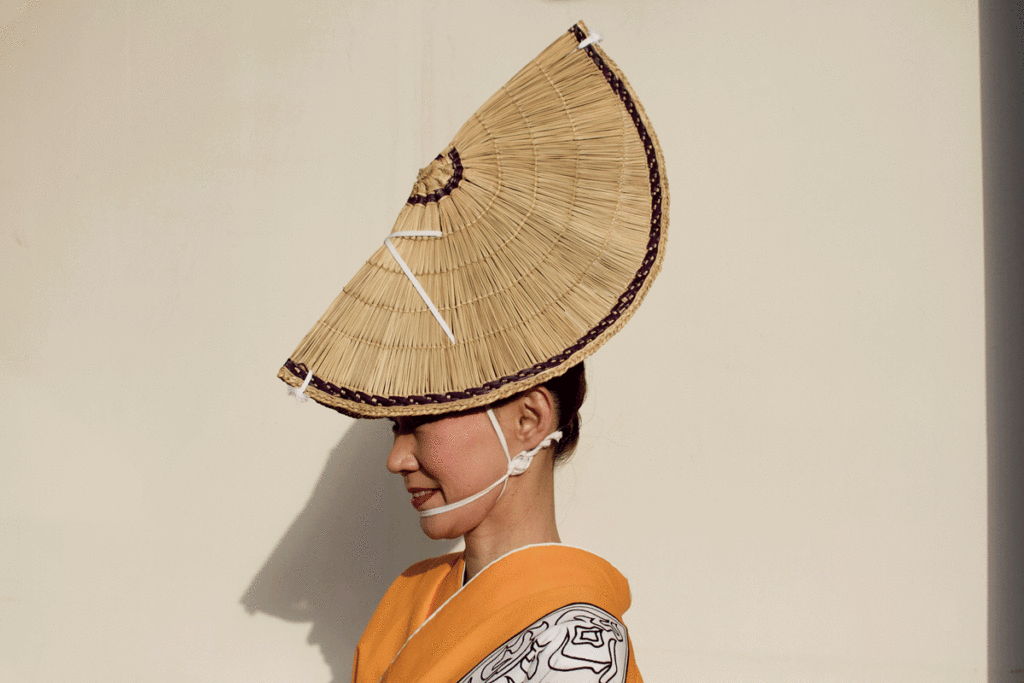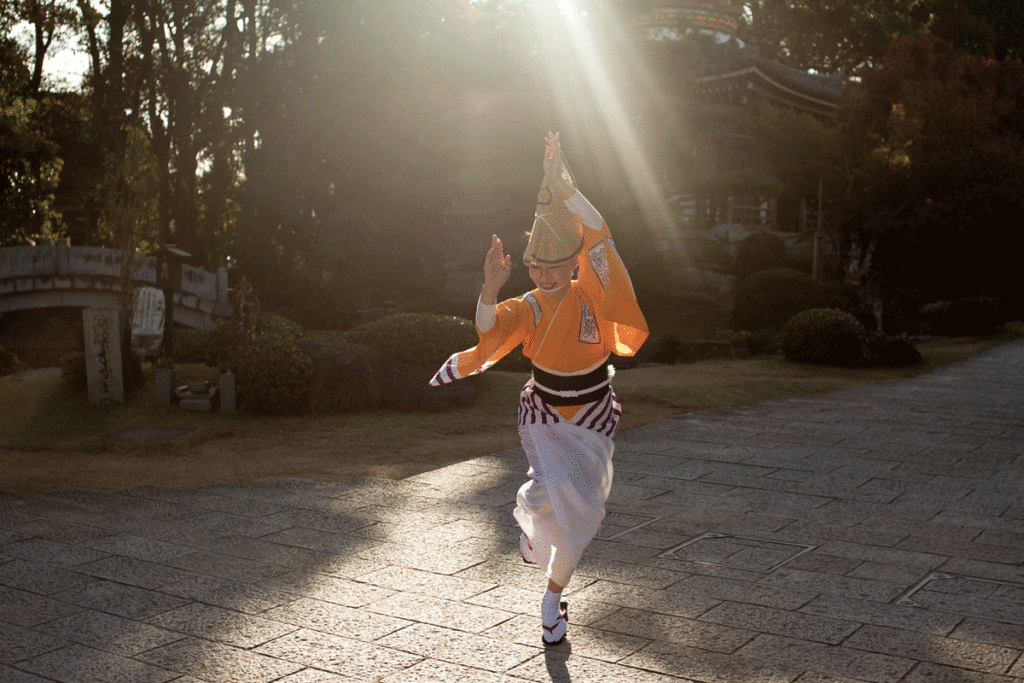Story 01 | An endless, ceaseless dance.
The Awa odori is Japans longest, largest and most chaotic dance festival. Over four days in August hundreds of dancers will fill the humid streets to perform a unique dance as part of Obon, the Japanese festival for the dead. The Awa Odori style of dance is ecstatic and tipsy, dancers are whipped into a heightening frenzy by the thud of Taiko drums and loud strumming of Shamisen. Hypnotic, sweaty and very loud, it’s hard not to fall under the spell of it all, which is why nearly 1.5 million people visit Tokushima each summer, keeping the festival, and the local region, thriving, something other regions in Japan have not managed to achieve with their traditional festivals.
Kayo Shinomiya, a Tokushima local, has been dancing in the festival since she was two years old. “In those days I would have to put hot towels on my legs after the second or third day of dancing to get the swelling in my legs down, otherwise I couldn’t go back for more.” Now 50, Shinomiya has become one of the festivals most accomplished female dancers. She was an important member of Ahouren, a very successful ‘ren’ (dance group) where she was one of the first to adapt the floppy, soft female style, into a harder, sharper and more masculine style of dancing for women. Now she is the leader of ‘Rainbow’, her own all female dance group. Although the dancing looks improvised and wild, it requires regular practice to master, and much more than that to perfect, dancers will practice weekly through the year.

“Before World War 2 there were only three big groups,” she explains, “but after the war those groups split into many smaller factions.” Now there are 32 major ren, with hundreds of smaller ren competing for primacy. Relationships between and within the different groups can become quite tense and political. When asked whether this competition is what keeps the festival so vibrant, Shinomiya pauses. No, it’s not the competing groups, or even the unique dance style, “we still wear Kimono,” she says, “we still play live traditional instruments, that is where our power lies. Nothing is amplified through speakers, it’s just the raw sound and the dancing as it always has been.”
Shinomiya works as a photographer in a local studio but the way she talks about the dancing you’d think dancing were her full time job. Generally Awa Odori is danced simply for the love of it; it’s an exhausting, addictive passion. As a testament to that, Shinomiya brings out an enormous stack of scrapbooks and boxes of photos for us to sift through, images of decades of dancing. We look through them and listen to stories long after the sun sets. You get the feeling that her world is forever inside the dance, that although she’s speaking with you now, she’d much rather be dancing.
< PAPERSKY no.38(2012)>












